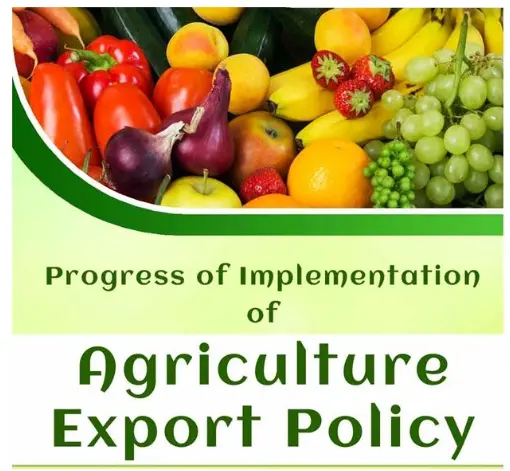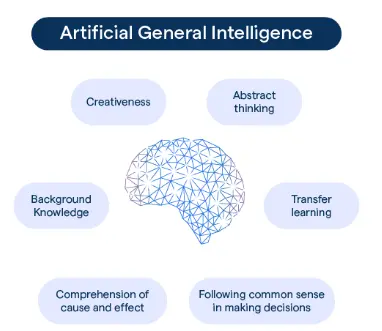Tuesday, 14th May 2024
Scrutiny of India's Sugarcane Subsidy under WTO
In News: The US and Australia claim that India's sugarcane subsidies surpass WTO's Agreement on Agriculture limits, potentially distorting global trade.
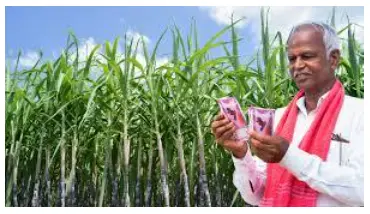
Understanding the WTO’s Agreement on Agriculture (AoA)
- Definition: The Agreement on Agriculture (AoA) is an international treaty established by the World Trade Organization (WTO) during the Uruguay Round of the General Agreement on Tariffs and Trade (GATT), coming into force on January 1, 1995.
- Objective: AoA aims to eliminate trade barriers, promote transparent market access, and foster the integration of global markets, seeking to establish a fair and market-oriented agricultural trading system with rules applicable to all WTO members.
Key Components of AoA
- Domestic Support:
- Requires reduction in domestic subsidies to mitigate distortion of free trade and fair pricing.
- Developed countries are mandated to reduce the Aggregate Measurement of Support (AMS) by 20% over 6 years, while developing countries must reduce it by 13% over 10 years.
- Subsidies are categorized into Blue Box, Green Box, and Amber Box subsidies.
- Market Access:
- Entails conditions, tariffs, and non-tariff measures agreed upon by WTO members for the entry of specific goods into their markets.
- Requires progressive tariff cuts and the removal of non-tariff barriers to facilitate free trade.
- Export Subsidy:
- Includes subsidies on agricultural inputs, making exports cheaper, or offering other export incentives.
- Such subsidies can lead to dumping of highly subsidized products in other countries, damaging their domestic agriculture sectors.
Allegations against India Regarding Violating AoA
- Background: In response to previous allegations from Brazil, Australia, and Guatemala in 2019 regarding India's sugar subsidies, a WTO panel confirmed the claims in 2021. However, India appealed the findings, delaying adoption by the WTO's Dispute Settlement Body.
- Complaint: The US and Australia allege that India’s domestic support measures violate various articles of the WTO’s Agreement on Agriculture, with India's Market Price Support for sugar exceeding the permitted level of 10% from 2018-2022. They also highlight India's failure to include sugarcane or its derivatives in domestic support notifications since 1995-96, hindering the assessment of India's compliance with global trade regulations.
- India’s Stand: India appealed against the WTO panel's ruling, arguing that its support measures for sugar and sugarcane do not constitute market price support under the AoA. India pointed out flaws in the US-Australia analysis, emphasizing discrepancies related to the utilization of sugarcane production data irrespective of actual delivery to sugar mills under the Sugarcane (Control) Order, 1966.
Conclusion
The allegations against India's sugarcane subsidies have significant implications for international trade dynamics. Moreover, the prolonged dispute resolution process underscores the complexities and challenges associated with enforcing compliance with WTO regulations.
|
UPSC Previous Year Questions Prelims (2020) Q. With reference to the current trends in the cultivation of sugarcane in India, consider the following statements:
Which of the statements given above is/are correct? (a) 1 and 2 only Ans: (c) Prelims (2017) Q. Consider the following statements:
Which of the statements given above is/are correct? (a) 1 and 2 only Ans: (a) Prelims (2016) Q. In the context of which of the following do you sometimes find the terms ‘amber box, blue box and green box’ in the news? (a) WTO affairs (b) SAARC affairs (c) UNFCCC affairs (d) India-EU negotiations on FTA Ans: (a) Prelims (2015) Q. The Fair and Remunerative Price (FRP) of sugarcane is approved by the (a) Cabinet Committee on Economic Affairs Ans: (a) Mains (2018) Q1. What are the key areas of reform if the WTO has to survive in the present context of ‘Trade War’, especially keeping in mind the interest of India? Mains (2016) Q2. “The broader aims and objectives of WTO are to manage and promote international trade in the era of globalisation. But the Doha round of negotiations seem doomed due to differences between the developed and the developing countries.” Discuss in the Indian perspective. Mains (2014) Q3. WTO is an important international institution where decisions taken affect countries in a profound manner. What is the mandate of WTO and how binding are their decisions? Critically analyse India’s stand on the latest round of talks on Food security. |
Source: ET
China Regains Title of India’s Leading Trading Partner
In News: According to data from the Global Trade Research Initiative (GTRI), China has become India's largest trading partner, with a two-way commerce totalling $118.4 billion in 2023-24, narrowly surpassing the India-US trade of $118.3 billion in the same period.
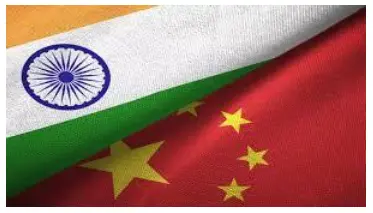
Bilateral Trade between India and China
- Statistics
- In FY24, India's bilateral trade with China amounted to $118.4 billion.
- India's imports increased by 3.24% to $101.7 billion, while exports rose by 8.7% to $16.67 billion in FY24 compared to FY23.
- Surge in Imports from China
- Between FY19 and FY24, India's exports to China experienced a slight decline of 0.6%, falling from $16.75 billion to $16.66 billion.
- In contrast, imports from China surged by 44.7%, rising from $70.32 billion to $101.75 billion during the same period.
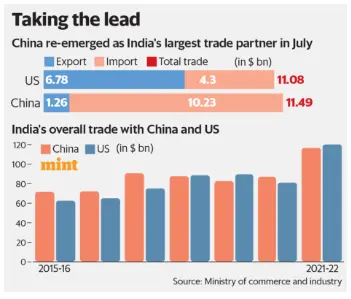
- Major Imports and Exports
- India's major imports from China include electrical and electronic equipment, engineering goods, chemicals, plastics, and textiles.
- Major exports from India to China comprise engineering goods, agricultural products, ores and minerals, chemicals, and petroleum products.
- Existing Trade Deficit
- The trade balance heavily favors China, with the trade deficit expanding from USD 53.57 billion in FY2019 to USD 85.09 billion in FY2024.
- Reasons Behind High Trade Deficit
- India imports goods to bridge the gap between domestic production and demand, contributing to the widening trade deficit.
- The export of raw materials from India while importing finished goods from China exacerbates the trade imbalance.
- India's pharmaceutical industry heavily relies on active pharmaceutical ingredients (APIs) imported from China.
- Strategic Implications
- India's dependence on critical products from China raises strategic concerns, impacting not only the economy but also national security.
- Efforts have been made to reduce dependency through production-linked incentive schemes (PLI) and anti-dumping duties.
India-US Bilateral Trade
- Statistics
- India-US two-way trade amounted to $118.3 billion in FY24, with exports declining by 1.32% to $77.5 billion compared to the previous fiscal year.
- Imports also decreased by 20% to $40.8 billion during this period.
- Recent Trend
- Over the last five years, trade with the US has shown positive growth, with exports increasing significantly by 47.9% from $52.41 billion to $77.52 billion.
- Imports from the US grew by 14.7%, rising from $35.55 billion to $40.78 billion, resulting in an expanded trade surplus for India.
Trade Relations with Other Countries (2019–2024)
- With Russia
- Exports to Russia grew by 78.3% from $2.39 billion to $4.26 billion, while imports surged by 952% from $5.84 billion to $61.44 billion, widening the trade deficit.
- With Saudi Arabia
- Saudi Arabia's exports more than doubled, reaching $11.56 billion, while imports rose by 11.7% to $31.81 billion, reducing the trade deficit slightly.
- With UAE
- Exports to the UAE increased by 18.3% to $35.63 billion, and imports rose substantially to $48.02 billion, resulting in a deficit by FY24.
Source: IE
Investment Models and the Challenges in NH Construction
In News: CareEdge Ratings predicts a 7-10% decrease in the execution pace of Indian national highways, dropping from 12,350 km in FY24 to about 11,500 km in FY25. This dip is largely due to underperforming projects under the hybrid annuity model (HAM), a PPP combination of EPC and BOT models.
Need for Different Investment Models
- Introduction
- To achieve double-digit growth, infrastructure development is crucial, leading to increased government investment in the sector.
- Public-Private Partnerships (PPP)
- The government occasionally engages in contracts with private companies, known as PPP, to efficiently distribute funds and ensure uninterrupted implementation of infrastructure projects.
- PPP contracts involve hiring private entities by public bodies, remunerated based on performance, aimed at combining public and private sector capabilities for optimal results.
- Types of PPP Contracts
- Various PPP models, including BOT, BOO, BOOT, and BBO, facilitate long-term arrangements to complete projects timely and cost-effectively.
Understanding Build-Operate-Transfer (BOT)
- Definition
- Under BOT, a private entity is granted a concession to finance, build, and operate a project for a set period.
- The developer recovers investments through user fees or tolls, after which the facility is transferred to the government.
- Pros and Cons
- Advantages include improved operational efficiency, economic diversification, but drawbacks may involve private partners facing risks, lack of accountability, potential monopolies, and crony capitalism.
Engineering, Procurement, and Construction (EPC) Model
- Definition
- EPC contracts, primarily for complex industrial and infrastructure projects, entail a contract between the owner and a contractor responsible for design, construction, and associated activities.
- Comparison with PPP
- In contrast to PPP, EPC involves private entities solely, with the government bearing financial burdens and handling project delays.
Hybrid Annuity Model (HAM)
- Definition
- HAM combines elements of EPC and BOT, with the government contributing 40% of project costs and the developer arranging the rest, usually through debt.
- Importance
- HAM mitigates risks by spreading them between developers and the government, enhancing project returns.
Challenges in NH Construction
- Challenges include declining execution pace, setbacks in HAM projects, and regulatory and financial concerns, requiring regulatory clarity and alternative funding avenues for smoother implementation.
Source: BL
Supreme Court to Address Existence of Article 31C
In News: In a recent development, a nine-judge Bench of the Supreme Court has decided to examine the validity of Article 31C. This decision was made during the hearing of a case aimed at determining the government's authority to acquire and redistribute private property.
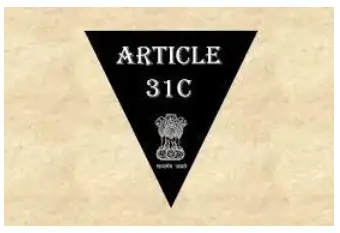
Understanding Article 31C
- About
- Article 31C safeguards laws enacted to uphold social objectives, ensuring that the community's material resources are distributed for the common good (Article 39B) and preventing the concentration of wealth and means of production to the detriment of the common interest (Article 39C).
- Introduction
- Added to the Indian Constitution in 1971 through the 25th Constitutional Amendment, Article 31C was a response to the Supreme Court's decision in the R.C. Cooper v. Union of India (Bank Nationalisation Case,1969), where the court invalidated the Banking Companies Act, 1969 due to compensation issues.
- Purpose
- Article 31C shields directive principles (Articles 39B and 39C) from challenges based on the right to equality (Article 14) or rights under Article 19 (freedom of speech, right to assemble peacefully, etc).
Legal and Constitutional Challenges
- Kesavananda Bharati Case (1973)
- The Supreme Court established the "basic structure doctrine," holding certain fundamental aspects of the Constitution beyond modification by Parliament.
- It invalidated a portion of Article 31C, enabling scrutiny of laws enacted to further Articles 39(b) and 39(c) to ensure alignment with their principles.
- Constitution (Forty-second) Amendment Act, (CAA) 1976 and Minerva Mills Case (1980)
- CAA, 1976 extended Article 31C's protection to encompass all directive principles outlined in Articles 36-51.
- The Minerva Mills Case (1980) struck down clauses 4 and 5 of the CAA, 1976, limiting Parliament's authority to amend the Constitution extensively.
Arguments Regarding Article 31C
- Argument Against Automatic Revival
- The original Article 31C was replaced entirely by an expanded version in the 42nd Amendment, suggesting that automatic revival is not warranted.
- Argument for Doctrine of Revival
- Supporters of the doctrine of revival argue that the original Article 31C should resurface if subsequent amendments are invalidated, citing precedents like the National Judicial Appointments Commission ruling.
|
UPSC Previous Year Questions Prelims (2021) Q. With reference to the Indian judiciary, consider the following statements:
Which of the statements given above is/are correct? (a) 1 only (b) 2 only (c) Both 1 and 2 (d) Neither I nor 2 Ans: (c) Q. What was the exact constitutional status of India on 26th January, 1950? (2021) (a) A Democratic Republic (b) A Sovereign Democratic Republic (c) A Sovereign Secular Democratic Republic (d) A Sovereign Socialist Secular Democratic Republic Ans: (b) Mains (2017) Q. Critically examine the Supreme Court’s judgement on ‘National Judicial Appointments Commission Act, 2014’ with reference to the appointment of judges of higher judiciary in India. |
Source: IE
Leopard Cat
In News: A senior forest official recently confirmed the first-ever sighting of a leopard cat in Maharashtra's Pench Tiger Reserve.

Leopard Cat: A Forest-Dwelling Felid
- The Leopard Cat, scientifically known as Prionailurus bengalensis, belongs to the family Felidae and is recognized for its leopard-like coloring.
- Distribution: These cats have the broadest distribution among Asian small cats, ranging from the Russian Far East's Amur region to the Sunda Islands of Indonesia. They inhabit regions across the Korean Peninsula, China, Indochina, the Indian Subcontinent, northern Pakistan, the Philippines, and Indonesia.
- Habitat: While they can be found in agriculturally used areas, Leopard Cats prefer forested habitats, including tropical evergreen rainforests, plantations at sea level, and subtropical deciduous and coniferous forests in the Himalayan foothills.
- Features: Exhibiting variations in size and appearance, Leopard Cats typically have pale tawny, yellow, red, or grey fur above, with white underparts and spotted patterns. They often have four black stripes running down from the forehead to the nape, breaking into short bands and elongate spots on the shoulders. Their body length ranges from 45 to 75 cm (18 to 30 inches), excluding the 23–35-cm (9–13.8-inch) tail. They are solitary, nocturnal carnivores.
- Conservation Status: The International Union for Conservation of Nature (IUCN) categorizes Leopard Cats as Least Concern on the Red List, indicating a relatively stable population.
Source: TP
Mammoth Carbon Capture Plant
In News: In recent developments, operations have commenced at the world's largest facility aimed at extracting carbon dioxide from the atmosphere, located in Iceland.
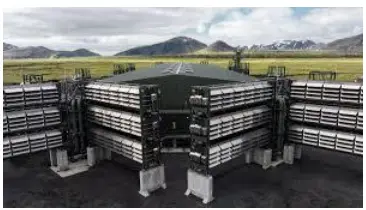
Mammoth Carbon Capture Plant: A Breakthrough in Climate Technology
- Recently launched, the Mammoth carbon capture plant stands as the largest facility of its kind, situated atop a dormant volcano in Iceland.
- Dubbed "Mammoth," this facility is the second commercial direct air capture (DAC) plant developed by Climeworks in Iceland, surpassing its predecessor, Orca, which commenced operations in 2021.
- The innovative process involves drawing air into the plant and chemically extracting carbon dioxide, offering multiple disposal options such as underground storage, conversion into stone, or reuse.
- Climeworks, in collaboration with Icelandic company Carbfix, intends to sequester the captured carbon by transforming it into stone underground, leveraging Iceland’s abundant geothermal energy for power.
- Direct air capture technology allows for the extraction of CO2 directly from the atmosphere at any location, differing from traditional carbon capture methods which usually occur at emission points like steel plants.
- The captured CO2 can either be permanently stored in deep geological formations or utilized for various applications.
Source: TH
Indian Ocean Basin-wide (IOBW) Index
In News: The study reveals a strong correlation between dengue outbreaks and the Indian Ocean basin-wide (IOBW) index in both the Northern and Southern hemispheres.
Understanding the Indian Ocean Basin-wide (IOBW) Index and its Impact on Dengue Epidemics:
- Definition and Purpose
- The IOBW Index measures the average sea-surface temperature variations across the tropical Indian Ocean.
- It serves as a crucial indicator for predicting the scale and timing of dengue outbreaks in affected countries.
- Geographical Associations
- The index exhibits a stronger correlation with the Southern Hemisphere compared to the Northern Hemisphere.
- Its influence on temperatures is particularly notable in tropical regions, affecting countries like Brazil, which experiences a higher incidence of dengue in the Southern Hemisphere.
- Seasonal Patterns
- Dengue epidemics peak at different times in the Northern and Southern Hemispheres: July to October in the Northern Hemisphere and February to April in the Southern Hemisphere.
- The amplitude of dengue outbreaks tends to be higher during periods when the IOBW Index is positive and lower when it is negative.
- Explanation
- The relationship between Indian Ocean temperatures and dengue outbreaks is likely due to teleconnections, which are large-scale atmospheric patterns facilitating the transfer of heat and moisture over vast distances.
Key Facts about Dengue
- Dengue is caused by the dengue virus (DENV) and primarily transmitted to humans through infected female mosquitoes, particularly the Aedes aegypti species.
- Severe cases of dengue fever, known as dengue hemorrhagic fever, can lead to complications such as serious bleeding, sudden drop in blood pressure, and even death.
- The disease is more prevalent in tropical and subtropical climates, with common symptoms including high fever, headache, body aches, nausea, and rash.
Source: DTE
ASEAN-India Trade in Goods Agreement
In News: The 4th Joint Committee meeting to review the ASEAN-India Trade in Goods Agreement (AITIGA) took place in Putrajaya, Malaysia, from May 7th to 9th, 2024.
Overview of the ASEAN-India Trade in Goods Agreement
- The ASEAN-India Trade in Goods Agreement is a trade pact between India and the ten member states of ASEAN.
- It was officially signed during the 7th ASEAN Economic Ministers-India Consultations in Bangkok, Thailand, in 2009.
- Taking effect in 2010, it is commonly referred to as the ASEAN-India Free Trade Agreement.
- This agreement primarily focuses on facilitating trade in physical goods and products, excluding trade in services.
- Notably, a separate ASEAN-India Trade in Services Agreement was signed in 2014 to address trade in services.
About ASEAN
- ASEAN, or the Association of Southeast Asian Nations, was established in 1967 with the signing of the Bangkok Declaration.
- Its founding members include Indonesia, Malaysia, Philippines, Singapore, and Thailand.
- Presently, ASEAN consists of ten member states: Indonesia, Malaysia, Philippines, Singapore, Thailand, Brunei, Laos, Myanmar, Cambodia, and Vietnam.
- ASEAN aims to promote intergovernmental cooperation and foster integration across various domains, including economic, political, security, military, educational, and sociocultural aspects within its member states and with other Asian countries.
Source: PIB
Vibrant Village Programme
In News: The Home Ministry has approved 113 roads as part of the Vibrant Village Programme in Arunachal Pradesh, Uttarakhand, and Sikkim, aiming to enhance connectivity in border areas.

Overview of the Vibrant Village Programme
- The Vibrant Village Programme is a Centrally Sponsored Scheme that spans from the financial years 2022-23 to 2025-26.
- Its primary objective is to comprehensively develop villages and blocks situated along the northern border, aiming to enhance the quality of life for residents in identified border areas.
- The programme seeks to incentivize people to remain in their native villages along the border and counter the trend of outmigration, thereby contributing to improved border security.
- Implemented in 2967 villages across 19 districts and 46 border blocks of four states (Arunachal Pradesh, Sikkim, Uttarakhand, Himachal Pradesh) and one Union Territory (Ladakh) along the northern land border of India.
- It allocates funds for essential infrastructure development and the creation of livelihood opportunities in the identified villages.
- Focus areas of intervention include promoting tourism and cultural heritage, skill development, entrepreneurship, and the development of cooperative societies such as agriculture and horticulture.
- Interventions also cover providing road connectivity to unconnected villages, housing and village infrastructures, and ensuring energy and telecom connectivity, including renewable energy sources.
- Vibrant Village Action Plans are formulated by district administrations in collaboration with Gram Panchayats, with a focus on achieving 100% saturation of Central and state schemes.
- The programme is distinct from the Border Area Development Programme, ensuring no overlap in objectives or implementation.
Source: TH
Zero-Day Vulnerabilities
In News: Another zero-day vulnerability has been discovered in Google Chrome, causing concern among users and cybersecurity experts alike.
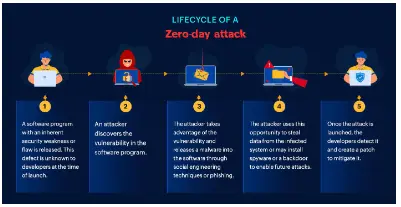
Understanding Zero-Day Vulnerabilities
- A Zero-Day Vulnerability (ZDV) refers to a flaw within a system or software that remains unknown to the vendor, with no available patch or mitigation upon its discovery.
- Zero-day attack describes an instance where there's no delay between the vulnerability's discovery and the first attack exploiting it.
- Zero-day exploit denotes the method hackers utilize to capitalize on a ZDV, often through malware, to execute the attack.
- Consequently, a zero-day attack unfolds when threat actors create and deploy malware targeting the ZDV.
- ZDVs pose heightened risks to users as they are uncovered before security researchers and developers are aware of them, leaving systems vulnerable until a patch is released.
- After being disclosed, a ZDV transitions into an n-day or one-day vulnerability.
Source: News18
Migration Matters
In News: A recent article delves into the multifaceted nature of mobility, encompassing both internal migration within a country and migration to foreign nations, as well as the inherent challenges associated with these movements.
Understanding Migration
- Definition: Migration involves individuals crossing international boundaries or moving within a state from their usual place of residence, as per the International Organization for Migration.
- Analysis: Examining changes in migration regarding scale, direction, demographics, and frequency aids in policy development and intervention strategies.
Forms and Patterns of Migration
- Internal Migration: Movement within a country categorized by origin and destination, including rural-urban, intra-state, and inter-state migration.
- External Migration: Also known as international migration, involves individuals or families moving between countries due to various factors such as economic opportunities, education, family reunification, or seeking asylum.
- Forced and Voluntary Migration: Forced migration occurs due to factors like war or persecution, while voluntary migration is driven by better economic prospects or improved quality of life.
- Temporary and Permanent Migration: Temporary migration is short-term, while permanent migration involves settling in a new location.
- Reverse Migration: Individuals or families returning to their country of origin after previously migrating elsewhere.
Reasons for Migration
- Economic Factors: Push factors include poverty and joblessness, while pull factors include better job prospects and higher pay.
- Socio-cultural Factors: Influence migration for reasons like marriage, family reunification, or cultural preservation.
- Political Factors: Instability, conflicts, and government policies can compel migration.
- Environmental Factors: Natural disasters, climate change, and developmental projects can force migration.
- Developmental Projects: Projects like dams and river linking can lead to displacement and migration.
Impacts of Migration
- Positive Impacts: Economic growth, social change, cultural diversity, improved quality of life, innovation, and labor market flexibility.
- Negative Impacts: Demographic changes, environmental strain, social tensions, and family disruptions.
Challenges Associated with Migration
- Inadequate Social Security and Health Benefits
- Limited Portability of State-provided Benefits
- Scarcity of Affordable Housing and Basic Amenities
- Impacts of the COVID-19 Pandemic
- Exploitation and Discrimination
Addressing Migration Challenges
- Incorporating comprehensive social security measures
- Providing basic amenities
- Promoting integration and inclusion
- Investing in skill development and job creation
- Developing counter-magnet cities
- Implementing labor market policies
- Enforcing regulation and worker protection.
|
UPSC Previous Year Questions Mains (2015) Q. Discuss the changes in the trends of labour migration within and outside India in the last four decades. |
Source: BS
Share the article
Edukemy’s Current Affairs Quiz is published with multiple choice questions for UPSC exams
MCQ
Get Latest Updates on Offers, Event dates, and free Mentorship sessions.

Get in touch with our Expert Academic Counsellors 👋
FAQs
UPSC Daily Current Affairs focuses on learning current events on a daily basis. An aspirant needs to study regular and updated information about current events, news, and relevant topics that are important for UPSC aspirants. It covers national and international affairs, government policies, socio-economic issues, science and technology advancements, and more.
UPSC Daily Current Affairs provides aspirants with a concise and comprehensive overview of the latest happenings and developments across various fields. It helps aspirants stay updated with current affairs and provides them with valuable insights and analysis, which are essential for answering questions in the UPSC examinations. It enhances their knowledge, analytical skills, and ability to connect current affairs with the UPSC syllabus.
UPSC Daily Current Affairs covers a wide range of topics, including politics, economics, science and technology, environment, social issues, governance, international relations, and more. It offers news summaries, in-depth analyses, editorials, opinion pieces, and relevant study materials. It also provides practice questions and quizzes to help aspirants test their understanding of current affairs.
Edukemy's UPSC Daily Current Affairs can be accessed through:
- UPSC Daily Current Affairs can be accessed through Current Affairs tab at the top of the Main Page of Edukemy.
- Edukemy Mobile app: The Daily Current Affairs can also be access through Edukemy Mobile App.
- Social media: Follow Edukemy’s official social media accounts or pages that provide UPSC Daily Current Affairs updates, including Facebook, Twitter, or Telegram channels.


